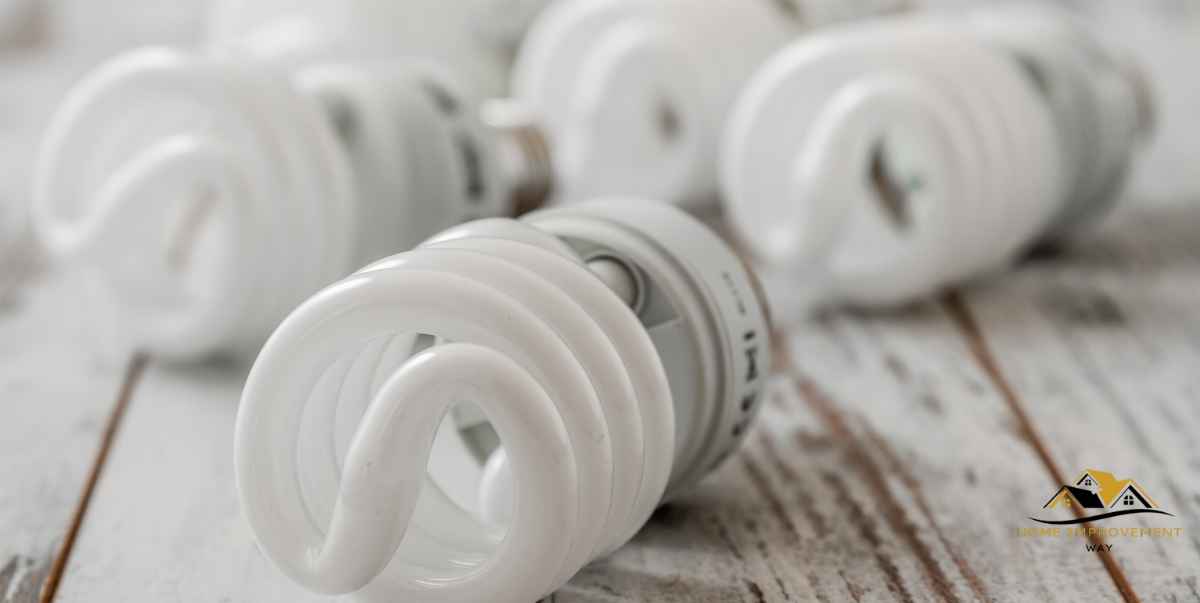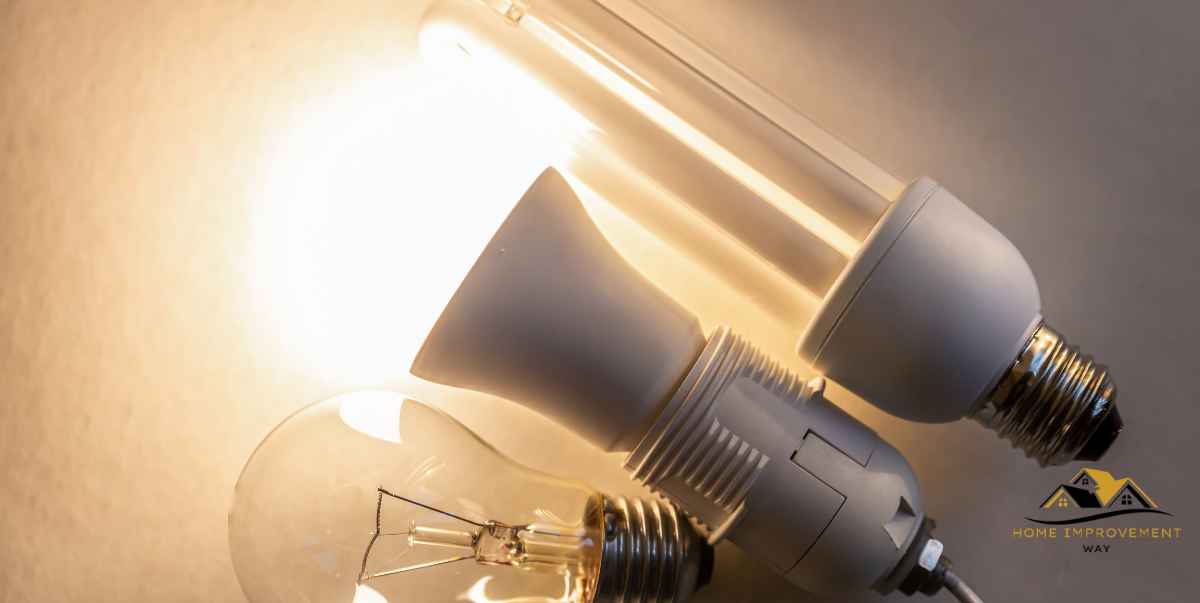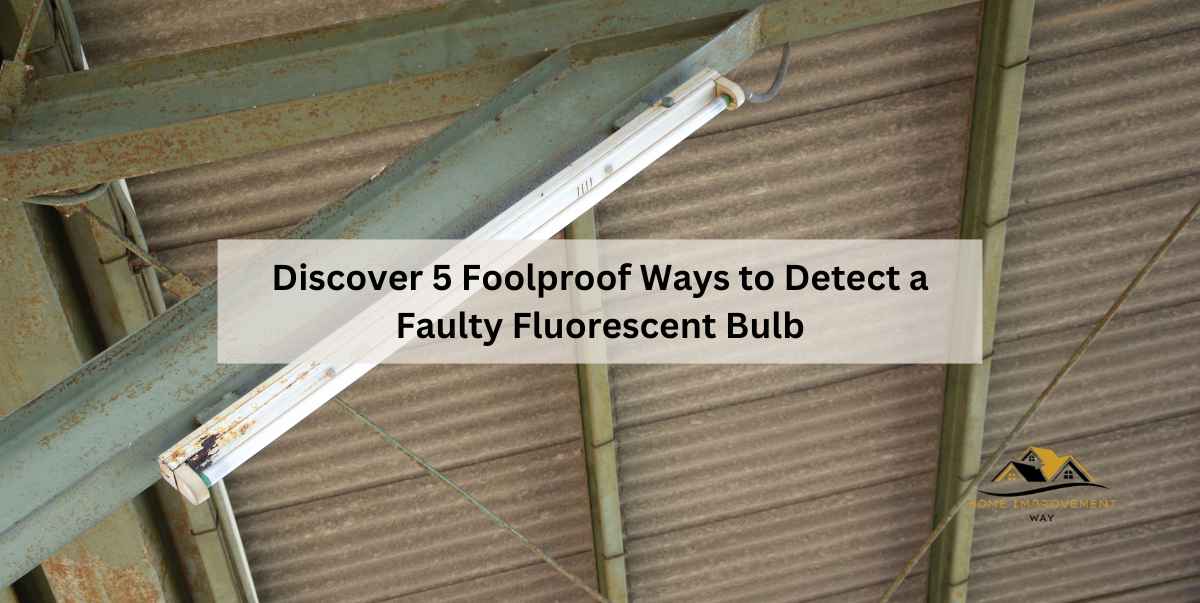To determine if a fluorescent bulb is bad, look for signs such as flickering or dimming, slow start-up, or the bulb not turning on at all.
Common Signs Of A Faulty Fluorescent Bulb
Fluorescent bulbs are widely used in various settings due to their long lifespan and energy efficiency. However, like any other lighting device, these bulbs can deteriorate over time and eventually become faulty.
To ensure optimal lighting in your space, it’s important to be able to recognize the common signs of a faulty fluorescent bulb. By paying attention to indicators such as flickering or dim lighting, buzzing or humming sounds, delayed or flickering start, and discoloration or dark spots, you can take the necessary steps to replace the bulb before it completely fails.
Flickering Or Dim Lighting
Flickering or dim lighting is one of the telltale signs of a faulty fluorescent bulb. If you notice that the light emitted by the bulb is inconsistent or seems to flicker, it could be an indication of a problem. Additionally, if the light is noticeably dimmer than usual, it’s likely that the bulb is nearing the end of its lifespan. This could be caused by issues such as worn out electrodes or a defective ballast. In either case, it’s best to replace the bulb promptly to avoid further complications.
Buzzing Or Humming Sounds
If you hear buzzing or humming sounds coming from your fluorescent bulb, it’s a clear sign that something is amiss. These noises can be an indication of a faulty bulb or a failing ballast. The ballast provides the necessary voltage to ignite the bulb, and when it starts to malfunction, it can produce these unwelcome sounds.
Ignoring this sign can lead to more problems, such as the bulb not turning on at all or even damaging the entire lighting fixture. Therefore, it’s crucial to address this issue promptly by replacing the bulb or calling a professional if needed.
Delayed Or Flickering Start
A delayed or flickering start is another common sign that your fluorescent bulb is on its way out. When you switch on the light, a properly functioning bulb should start instantly and remain stable. If you notice a delay in the bulb turning on or observe a flickering effect before it stabilizes, it’s a strong indication that the bulb is faulty. This could be due to loose connections, an aging ballast, or internal issues with the bulb itself. Rapidly switching on and off the light can exacerbate the problem and shorten the bulb’s lifespan, so it’s crucial to address the issue promptly.
Discoloration Or Dark Spots
Discoloration or the presence of dark spots on the bulb’s surface is a clear sign of wear and tear. Over time, fluorescent bulbs may develop dark spots or discoloration due to the aging phosphor coating inside the bulb. This can result in an uneven distribution of light and reduced overall brightness. If you notice any discoloration or dark spots on the bulb, it’s a good indication that it needs to be replaced. Continuing to use a bulb with these issues can lead to further deterioration and potential performance problems.

Testing Techniques To Identify Faulty Fluorescent Bulbs
Discover effective testing techniques to identify faulty fluorescent bulbs and determine if they need replacement. Easily detect bad fluorescent bulbs using simple indicators and troubleshooting steps, ensuring efficient lighting solutions.
Fluorescent bulbs are commonly used in offices, commercial spaces, and even homes due to their longevity and energy efficiency. However, like any other electronic device, fluorescent bulbs can degrade over time and eventually fail. So, how can you tell if a fluorescent bulb is bad? In this blog post, we will discuss several testing techniques that can help you identify faulty fluorescent bulbs, including visual inspection, the substitution method, and using a multimeter.
Visual Inspection
One of the easiest ways to determine if a fluorescent bulb is bad is through visual inspection. This method requires you to carefully examine the bulb for any visible signs of damage or malfunction. Start by turning off the power and removing the bulb from its socket. Inspect the bulb for any dark spots, discoloration, or blackening of the ends. These are clear indications that the bulb is nearing the end of its life or has already failed.
Apart from physical damage, you should also check for loose connections or broken pins. Ensure that the bulb is securely screwed into the socket and that there are no bent or missing pins. If you notice any of these issues, it’s a strong indication that the bulb needs to be replaced.
Substitution Method
The substitution method is another effective way to test whether a fluorescent bulb is bad. In this technique, you simply replace the questionable bulb with a known working bulb of the same type and wattage. If the new bulb illuminates properly, it confirms that the original bulb was indeed faulty.
Before swapping the bulbs, it’s crucial to ensure that both the existing and replacement bulbs are compatible. Check the wattage, size, and type (T5, T8, etc.) to make sure they match. Additionally, remember to turn off the power and allow the old bulb to cool down completely before removing it and inserting the replacement bulb. This method saves time and eliminates any doubt about whether the issue lies with the bulb or another component of the lighting fixture.
Using A Multimeter
For those who want a more precise way of diagnosing a faulty fluorescent bulb, using a multimeter can provide accurate readings. Start by turning off the power and removing the bulb from the fixture. Set your multimeter to the resistance mode (ohms) and touch the probes to the pins on the bulb. A healthy fluorescent bulb should show a very low resistance reading, close to zero ohms. Any significantly higher resistance reading indicates a problem with the bulb.
It’s important to note that using a multimeter requires caution and proper handling to avoid electric shocks. Always refer to the manufacturer’s instructions and wear protective gear when dealing with electrical components.
Testing techniques such as visual inspection, the substitution method, and using a multimeter can help determine whether a fluorescent bulb is bad. By following these methods, you can quickly identify faulty bulbs and replace them before they cause further issues. Remember, regular maintenance and prompt replacement of bad bulbs are essential in ensuring optimal lighting performance and energy efficiency in your space.
Preventive Measures To Prolong The Lifespan Of Fluorescent Bulbs
To ensure the longevity of your fluorescent bulbs, it is crucial to follow certain preventive measures. By taking a few simple steps, you can significantly prolong the lifespan of your bulbs, saving both time and money in the long run. In this section, we will discuss three key preventive measures in detail – Proper Installation, Avoiding Frequent On/Off Switching, and Regular Maintenance and Cleaning.
Proper Installation
When it comes to proper installation of fluorescent bulbs, it is essential to pay attention to a few important factors. Firstly, make sure you have the correct size and wattage for your fixture. Installing the wrong size or wattage can lead to premature burning out of the bulb.
Additionally, ensure that the bulb is securely inserted into the fixture and that it is not loose or wobbling. Properly aligning the pins of the bulb with the sockets in the fixture is also crucial to avoid any electrical issues.
Avoiding Frequent On/off Switching
Frequent on/off switching can have a significant impact on the lifespan of fluorescent bulbs. When possible, it is advisable to avoid turning the bulbs on and off frequently. Instead, consider using a timer or motion sensor to control the lighting. Fluorescent bulbs have a limited number of on/off cycles, and frequent switching can shorten their lifespan. By reducing the frequency of switching, you can ensure that your bulbs last longer and provide consistent illumination.
Regular Maintenance And Cleaning
Regular maintenance and cleaning are vital to keep your fluorescent bulbs functioning optimally. Dust and debris can accumulate on the surface of the bulbs, causing them to overheat and reducing their lifespan. To prevent this, make sure to clean the bulbs regularly with a soft cloth or compressed air. Additionally, check for any signs of damage or wear, such as cracks or discoloration, and replace any faulty bulbs promptly. By keeping your bulbs clean and maintaining them regularly, you can extend their lifespan and enjoy better illumination.
In conclusion, taking preventive measures to prolong the lifespan of your fluorescent bulbs is essential. By following these simple steps – proper installation, avoiding frequent on/off switching, and regular maintenance and cleaning – you can ensure that your bulbs last longer and provide optimal lighting for your space.
Best Practices For Safe Disposal Of Faulty Fluorescent Bulbs
Proper disposal of faulty fluorescent bulbs is crucial to ensure the safety of both the environment and individuals. When these bulbs burn out or break, they can release harmful substances such as mercury, which can pollute the soil and water.
To prevent such pollution and promote a cleaner and healthier planet, it is essential to understand the best practices for safe disposal of these bulbs. In this article, we will explore the proper disposal methods, recycling programs and centers, as well as safety precautions for handling faulty fluorescent bulbs.
Understanding Proper Disposal Methods
When it comes to disposing of faulty fluorescent bulbs, it is important to follow appropriate methods to minimize harm. Simply throwing these bulbs in regular waste bins can pose serious risks, particularly due to the presence of mercury. To ensure you dispose of them safely, consider the following options:
- Recycling Programs and Centers: Many communities have established recycling programs and centers specifically designed for fluorescent bulbs. These programs collect and properly dispose of these bulbs, preventing hazardous substances from entering landfills and contaminating the environment. To find the nearest recycling center near you, check the official website of your local government or environmental organizations.
- Manufacturer Take-Back Programs: Some manufacturers offer take-back programs where they accept their own branded fluorescent bulbs for proper disposal. These programs give consumers an easy way to dispose of faulty bulbs and ensure they are handled and recycled in an environmentally responsible manner. Check with the manufacturer or their website to see if they have such a program in place.
- Hazardous Waste Disposal Facilities: In areas where recycling programs and manufacturer take-back programs are not available, hazardous waste disposal facilities can be an alternative. These facilities are equipped to handle and dispose of hazardous materials, including fluorescent bulbs, in a safe and regulated manner.
- Mail-Back Programs: Another option is to utilize mail-back programs offered by certain organizations. These programs enable consumers to send their spent fluorescent bulbs for proper disposal, avoiding the risk of breakage during transportation.

Recycling Programs And Centers
Recycling programs and centers play a vital role in the safe disposal of faulty fluorescent bulbs. These facilities employ advanced techniques to extract and manage the hazardous materials contained within the bulbs, such as mercury. By recycling these bulbs, valuable resources can be recovered and reused while minimizing the impact on the environment.
When utilizing recycling programs and centers, it is important to adhere to their guidelines. This may involve packaging the bulbs securely in accordance with their requirements and ensuring they are brought to the specified recycling drop-off locations. By following these instructions, you can contribute to a more sustainable and eco-friendly approach to fluorescent bulb disposal.
Safety Precautions For Handling
While disposing of faulty fluorescent bulbs, it is crucial to prioritize your safety. These bulbs may contain hazardous materials and can break easily, potentially causing injuries or contamination. To minimize risks, take the following safety precautions:
- Use Protective Gloves and Eyewear: When handling fluorescent bulbs, wear protective gloves and eyewear to shield yourself from the glass shards and mercury contents.
- Avoid Direct Contact: Avoid direct skin contact with the glass or mercury inside the bulbs. If a bulb breaks, use gloves and a plastic scoop or cardboard to carefully collect the broken pieces, avoiding any contact with bare hands.
- Seal Broken Bulbs: If a bulb breaks, seal it in a plastic bag or a tightly sealed container to prevent the release of mercury vapor.
- Store Bulbs Safely: If you need to store faulty fluorescent bulbs temporarily, keep them in a sturdy container away from children and pets. Make sure the container is labeled as “hazardous” or “contains mercury” for proper identification.
- Never Vacuum Broken Bulbs: Do not use a vacuum cleaner to clean up broken fluorescent bulbs, as this can spread mercury vapor into the air and worsen the contamination.
By following these safety precautions, you can minimize the risks associated with handling faulty fluorescent bulbs and ensure your well-being and the well-being of the environment.
Conclusion
Identifying a faulty fluorescent bulb is crucial for maintaining a well-lit and efficient space. By paying attention to visual cues like flickering, dimming, or discoloration, as well as assessing the bulb’s age and condition, you can determine if a replacement is needed.
Being aware of these signs and taking prompt action will not only enhance lighting quality but also save on energy costs. So, keep an eye out for these indicators and ensure the optimal performance of your fluorescent bulbs.


